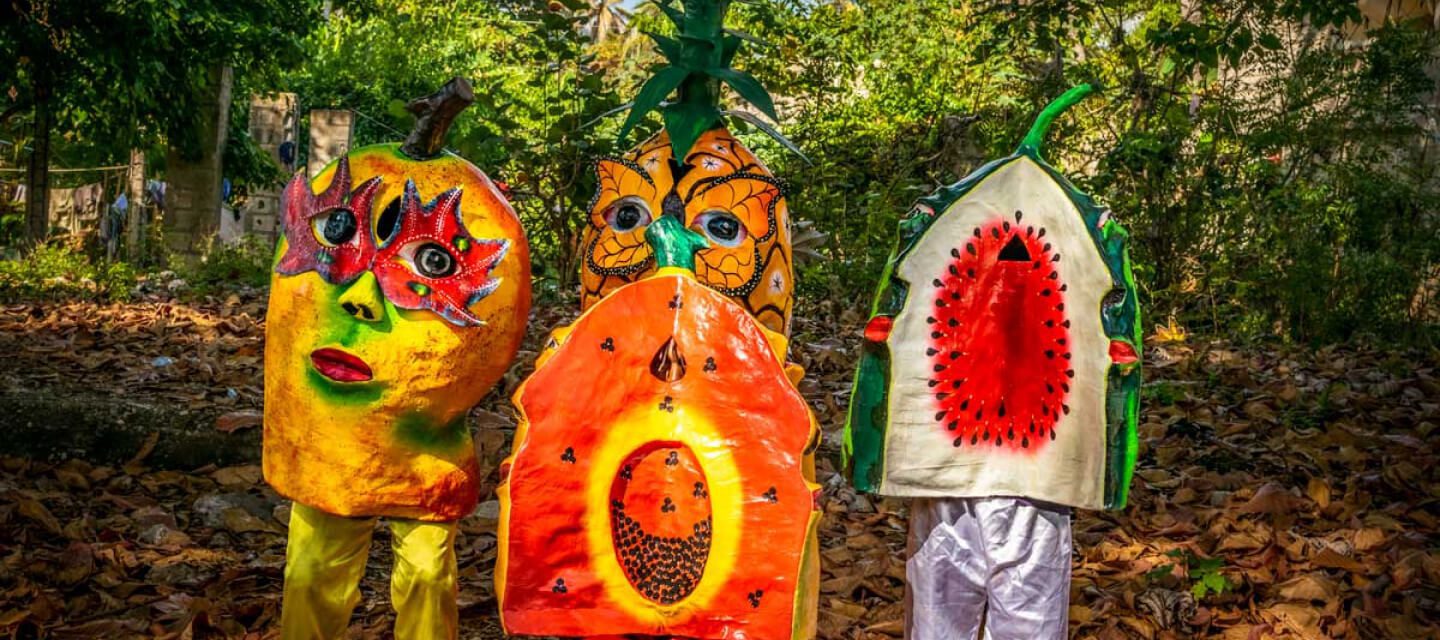
Photo: Jean Oscar Augustin
Meet the Colorful Characters From the Jacmel Carnival
Uncover the Strange and Captivating Haitian Carnival Tradition of Lansèt Kòd
Are you ready for a carnival like no other? One where mythical creatures, rich history, and vibrant costumes collide in a festive spectacle? Then pack your bags and head to Jacmel on Haiti’s south coast, where the city’s renowned carnival awaits.
For many Haitians, the phrase “Lage m pou m al nan kanaval” (I am ready to go to the carnival) rings a familiar tune, as it’s taken from a popular carnival meringue song. But the Jacmel carnival is not your average Mardi Gras. It’s a celebration of Haitian culture and society, expressed through a parade of colorful outfits and mesmerizing paper mache masks.
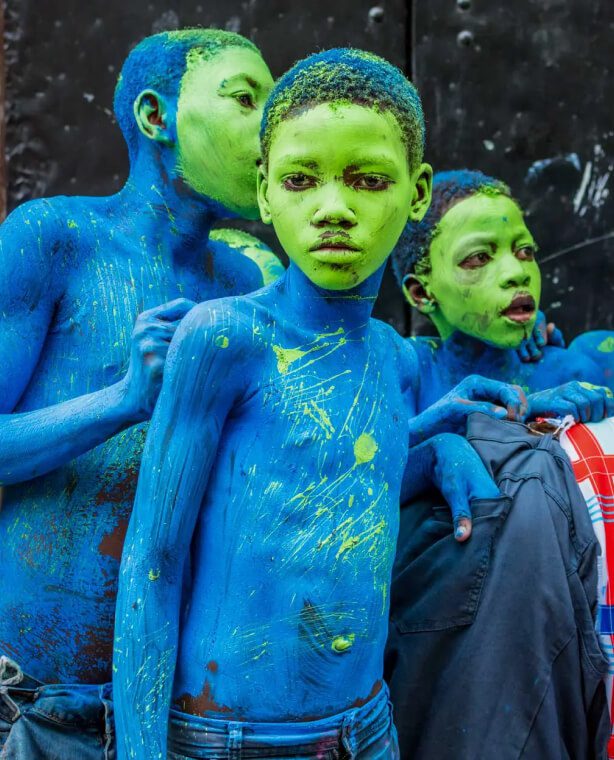
Photo: Viagens e Caminhos
The City of Jacmel
known as Haiti’s cultural capital, boasts a rich artistic tradition, particularly in paper mache. And the carnival is a testament to this, as it showcases mythical figures from Haiti’s collective imagination, such as the Chaloska, Lanset Kod, and Yawe. But the cast of characters and carnival costumes is ever-changing, incorporating figures inspired by the Vodou pantheon, current events, and notable individuals, making each edition a unique and lively critique of the history of Haiti.
Are you ready for a carnival like no other? One where mythical creatures, rich history, and vibrant costumes collide in a festive spectacle? Then pack your bags and head to Jacmel on Haiti’s south coast, where the city’s renowned carnival awaits.
Join us as we delve into the fascinating world of Jacmel’s carnival, where the characters and traditions that define Haiti’s rich history are celebrated in the most original and joyous way possible.
Are you ready? Let’s go!
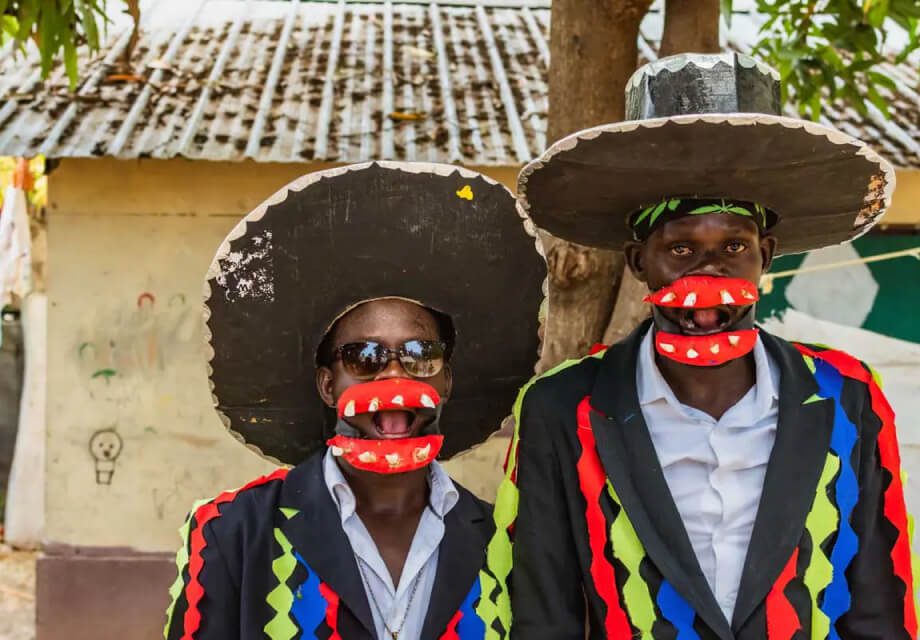
Photo: Jean Oscar Augustin
One-of-a-kind Chaloska
The Jacmel Carnival parade features some of the most intriguing characters and among them are groups of tall, young men dressed in tailcoats and tall top hats. These are the representations of General Charles Oscar Etienne, who was infamous for his cruelty in Port-au-Prince and Jacmel. The general gained notoriety for his acts of violence against political prisoners who opposed the government of President Vilbrun Guillaume Sam.
After the assassination of the president and his devoted general by an angry crowd in 1915, the carnival of Jacmel created the Chaloska character to mock the former general’s striking features, such as his height and prominent teeth. The costume, complete with epaulets, a cap, and an exaggerated set of teeth, serves as a colorful satire of the infamous general.
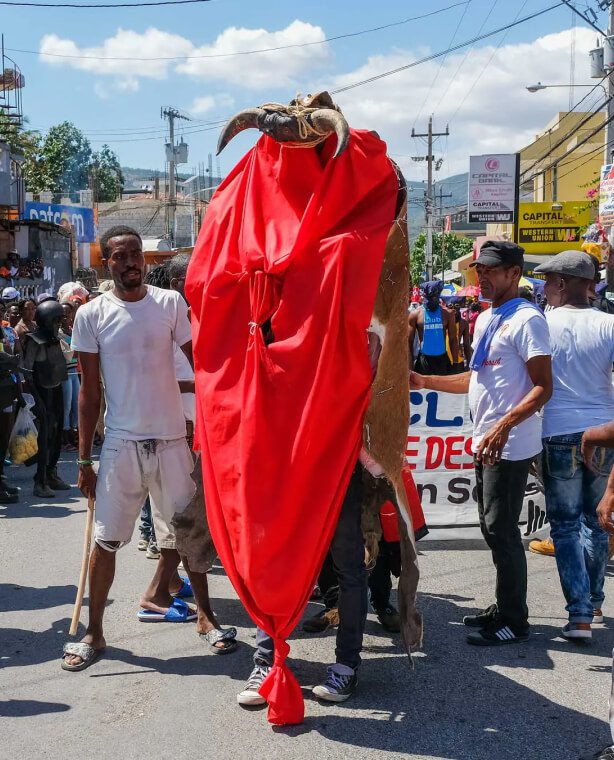
Photo: Franck Fontain
Yawe: A Unique Carnival Tradition!
Here’s another iconic Haitian carnival character found only in Jacmel. The Yawe’s costume is made of horns and fully covered in red fabric with an ox skin on it’s back. It may give you the impression of a bullfighter’s performance as other participants will chase the Yawe while cracking a whip and hitting it on the ox skin.
This tradition recalls the era when buccaneers hunted wild oxen and pigs on the island of Hispaniola, which is why the Yawe mimics an ox on the run. The name Yawe, which resembles the name of a Jewish deity, is believed by many to have been introduced to the country by the Jewish community of Jacmel.
Join us as we delve into the fascinating world of Jacmel’s carnival, where the characters and traditions that define Haiti’s rich history are celebrated in the most original and joyous way possible.
Are you ready? Let’s explore more!
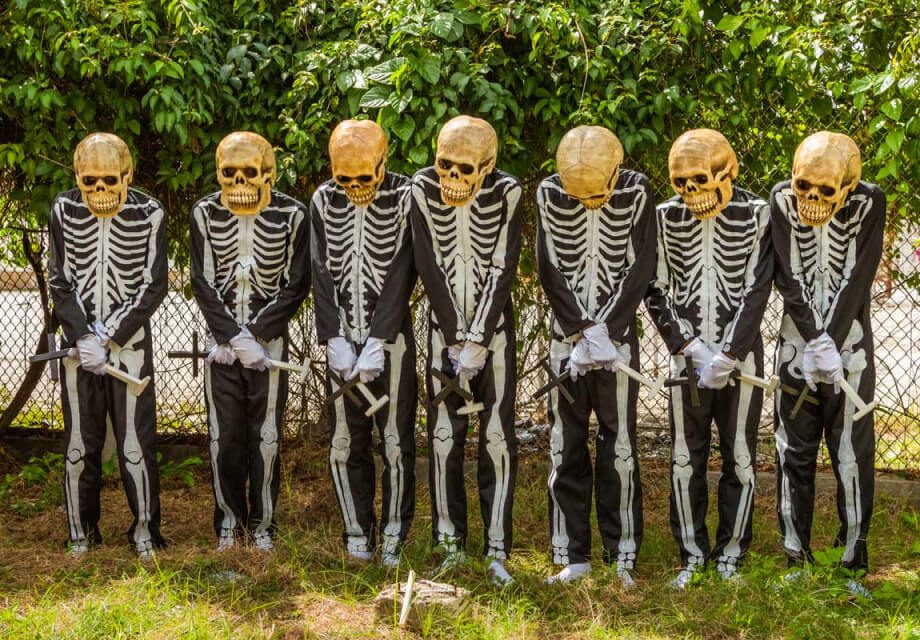
Photo: Jean Oscar Augustin
Enter the Zombies
The Jacmel Carnival is special in its ability to transport you from one world to another in the blink of an eye. The parade characters can suddenly make way for a spooky atmosphere filled with skulls and skeletons. These are the Zombies (zonbi in creole), one of the mysteries of Haitian folklore and Vodou that has captured the imagination of people around the globe and fueled incredible and improbable fantasies.
The concept of zombies has its roots deeply ingrained in Haitian culture and predates its appropriation by Hollywood and the rest of the world. Far before it became a mainstream theme in horror movies and video games, zombies in Haiti symbolized the dead who had risen from the grave and were forever enslaved.
So, what are you waiting for? Visit Jacmel during kanaval to get up close and personal with these characters!
Written by Diego Angeles.
Published December 2022.

